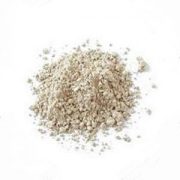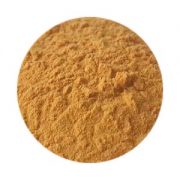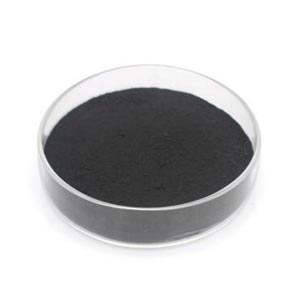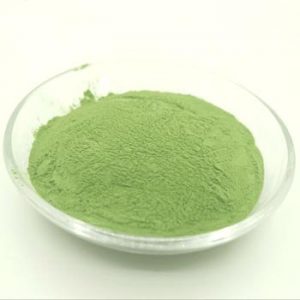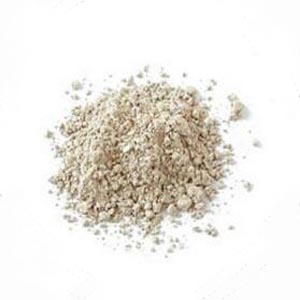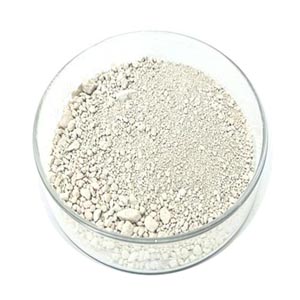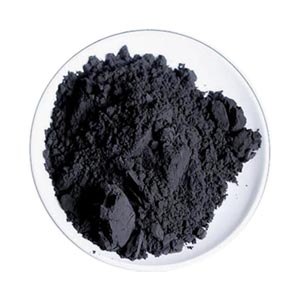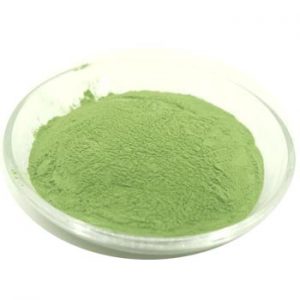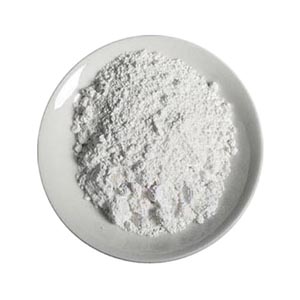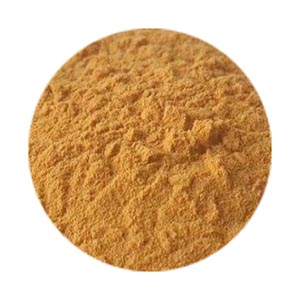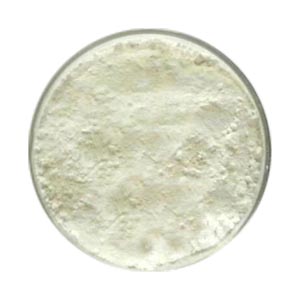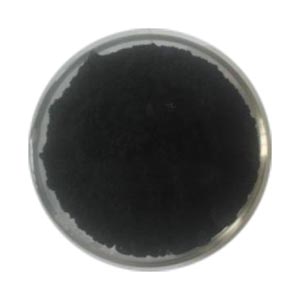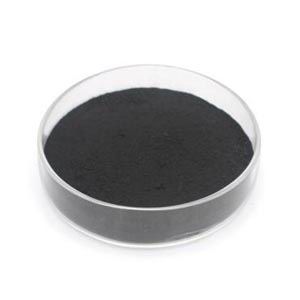
Copper zinc tin sulfide
Other name: CZTS
Chemical formula: Cu2ZnSnS4
Molecular weight :439.471 g / mol
CAS Number:12158-89-3
Melting point: 990 ° C (1,810 ° F; 1,260 K)
Safety Description: Non-toxic
- 描述
- Related Info.
- Inquiry
Copper zinc tin sulfur compounds as a direct bandgap semiconductor, can be used for thin film solar cell absorber layer. The band gap is 1.4-1.5eV. At present, the efficiency of thin-film solar cells with CZTS as absorption layer has reached 12%
Uses: used to prepare CZTS thin film solar cells;
Common preparation methods:
1) sputtering process: CZTS target;
2) Evaporation process: The four elements Cu, Zn, Sn and S are deposited at different temperatures under high vacuum by the vacuum thermal evaporation method (it is very difficult to control the ratio of the four elements!)
3) spray pyrolysis method: first spray CuCl, ZnCl2 and SnCl4 in a specific solution after curing;
4) electrodeposition method: first configure the Cu salt, Zn salt, Sn salt, obtained by electrodeposition after the film vulcanization;
Copper-zinc-tin-sulfur battery or research and development success
According to a report by the American Physicist Network December 8 (Beijing time), the latest report by Purdue University scientists states that they have designed a solar cell made from a low-cost and abundant source material that is easy to be large-scale Production and performance is very stable, the global conversion efficiency as high as 7.2%, higher than the current similar solar cells, the conversion efficiency in the future there is still much room for improvement.
Writing in a recent issue of the American Chemical Society, scientists led by Dr. Guo Qijie pointed out that they made use of a solution-based thin film deposition method using a very abundant copper-zinc-tin-sulfur compound (CZTSSe) on Earth This solar cell.
Previous research confirmed that solar cells can be fabricated using copper-zinc-tin-sulfur (CZTS) nanocrystals. Professor Martin Green of the University of New South Wales in Australia called CZTS a candidate technology for the third generation of thin-film solar cells. Due to its non-toxic and mineral-rich properties, CZTS has the potential to replace cadmium telluride (CdTe) and copper indium gallium selenide CIGS) thin-film solar technology, thereby reducing the cost of solar power generation, so that renewable energy in the real life to replace fossil fuels. In February of this year, IBM announced the use of CZTS to produce such a solar cell, but its conversion efficiency is less than 1%.
In the latest research, scientists have developed a more robust and practical method of thin-film coating by making the various components of the nanocrystal more just and significantly improving the design of the CZTS solar cell.
After the synthesis of such nanocrystals, scientists applied it to a substrate to make a film with a thickness of 1 micron. Researchers found that there are many large, tightly packed large grains on the nanocrystalline film, which greatly improves the efficiency of the resulting cells. Researchers put it "soaked" in a solar simulator and achieved a conversion efficiency of 7.2% after 15 minutes, but the efficiency dropped to 6.89% with the simulator closed and no more light applied.
The paper co-author Hugh Hill House explained that global efficiency refers to the efficiency of the entire battery, not just the "effective light area" efficiency. Guo Qijie said global efficiency is the most effective. Now people refer to the conversion efficiency, refers to the solar cell "effective light area." However, all thin-film solar cells are made of metal contacts that prevent light from reaching somewhere. Taking these losses into account, they use the fairer, more important efficiency of "global" efficiency.
Although no CZTS or CZTSSe solar cells have yet appeared on the market, the solar cells in this study are very competitive with solar cells made by other methods. Hillhouse said the best cell made by the vacuum method has a conversion efficiency of only 6.7% and is even more expensive.
High efficiency copper-zinc-sulfur-sulfur photovoltaic cell conversion efficiency up to 10.3%
The Center for Solar Energy and Hydrogen Research (Baden-Württemberg, Baden-Württemberg, Baden-Württemberg, Germany) revealed recently that the conversion efficiency of copper, zinc, tin and sulfur thin film solar photovoltaic cells has reached 10.3% using the latest manufacturing process.
This refreshed the latest European record of the efficiency of copper-zinc-tin-sulfur thin-film photovoltaic cells and the conversion efficiency has been validated by the Fraunhofer Institute for Solar Energy Systems in Germany. The battery uses a printing process, Baden-Württemberg Solar Energy and Hydrogen Energy Research Center, said manufacturing process is simpler than the United States produced 11.1% world record of copper zinc tin sulfur thin film photovoltaic cells.
Dr. MichaelPowalla, board member of the Center for Solar Energy and Hydrogen Research in Baden-Württemberg, said: "However, the newest chemistry is similar to CIGS and contains a wealth of tin and zinc."
Production technology without vacuum technology
Powalla noted that glass substrates are coated with a non-toxic ink during the fabrication of copper-zinc-tin-sulfur photovoltaic cells - and without the need for complicated vacuum techniques.
After the glass substrate has been coated, the precursor layer needs to be heat-treated. The Baden-Württemberg Solar Energy and Hydrogen Research Center said that the remaining manufacturing composition is similar to that of the CIGS technology.
Baden-Württemberg Solar Energy and Hydrogen Research Center pointed out that the current copper-zinc-sulfur-sulfur photovoltaic cells have not yet put into commercial use.
The copper-zinc-tin-sulfur solar cell was jointly developed by researchers from the Baden-Württemberg Solar Energy and Hydrogen Research Center and the Karlsruhe Institute of Technology in Germany. In addition, KSOP also supports research and development work through PhD scholarships.
相关产品
-
Zinc telluride
Other name: tellanylidenezinc
CAS no. : 1315-11-3
EINECS no. : 215-260-2
Formula: TeZn.
Molecular weight: 193.009
Melting point is 1238.5 ℃
Density: 6.34 g/Ml at 25 ℃
-
Nickelous Oxide
Other name: Nickel Oxide Green, Nickel Monoxide, Nickel protoxide
CAS no. : 1313-99-1; 11099-02-8
EINECS no. : 215-215-7
Molecular formula: NiO
Molecular weight: 74.6928
Melting point: 1960 ℃
Solubility: insoluble -
Tin zinc oxide nano powder
English alias: Zinc Stannate; zinc oxostannanediolate
CAS no. : 12036-37-2
Molecular formula: O3SnZn
Molecular weight: 232.1172
-
Cuprous iodide
CAS no. : 7681-65-4
EINECS no. : 231-674-6
Molecular formula: CuI
Molecular weight: 190.45
Density: 5.62
Melting point: 605 ℃
Boiling point: 1290 ℃
Solubility: insoluble -
Manganese sesquioxide
Alias:; Manganese (III) oxide ; Dimanganese trioxide; Manganese oxide
CAS Number: 1317-34-6
EINECS number: 215-264-4
Molecular formula: Mn2O3
Molecular weight: 157.8743Grade: Electronic grade
Assay: 98% -
Nano nickel oxide
English alias: Nickel sesquioxide; Nickelic oxide; Nickel peroxide; Nickel oxide (Ⅲ)
The CAS number: 1314-06-3
EINECS no. : 215-217-8
Molecular formula: Ni2O3
Molecular weight: 165.38
-
Aluminum Nitride micron and nano powder
-
Tin Disulfide SnS2
Purity: ≥99%-99.9%
Particle size: D50=11μm
Character: yellow hexagonal flakeOther name: Stannic sulfide; Tin disulphide; Tin sulfide (SnS2)
CAS Number: 1315-01-1 -
Osmium Tetroxide
Other name: Osmium(VIII) oxide; tetraoxoosmium; Osmium oxide
CAS no. : 20816-12-0
EINECS no. : 244-058-7
Molecular formula: O4Os
Molecular weight: 254.2276
Melting point (℃) : 41.0
Relative density (water =1) : 4.91
Boiling point (℃) : 130
Saturated vapor pressure (kPa) : 0.93/20 ℃
-
Lithium iron phosphate
English name: Lithium iron phosphate carbon coated
Alias: Ferrous lithium phosphate, NP 1; NP 1 (phosphate); PT 30; PT 30 (phosphate); Phos-Dev 21B, Lithium iron phosphate
Molecular formula: LiFePO4
Molecular weight: 157.76
CAS NO .: 15365-14-7

